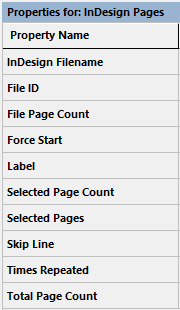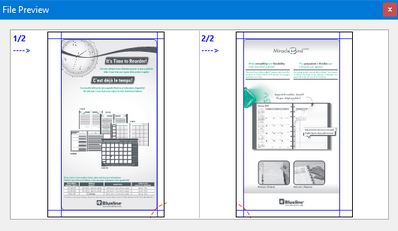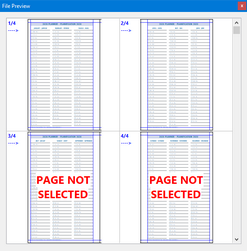XML identifier: TSL_InDesignPages
InDesignPages script lines are used to insert non-dated InDesign pages into a script.
By "non-dated" we mean that Q++Studio will not try to scan these pages for tokens, it will simply copy them, as is, into the output file.
This usually corresponds to information or notes pages.

On the right is a screenshot of the properties of InDesign scriptlines, as displayed in the properties inspector. Click on any of the properties in that image to navigate to the corresponding help topic.
The principal property of InDesign Pages is the InDesign Filename which tells Q++Studio which InDesign file to use.
The selected pages property allows you to select only some of the pages contained in this file. The values of the properties file page count, times repeated and total page count are displayed in the corresponding script line of the scripts editor.

You also can choose to have the text of the label property appear in the scripts editor, or the InDesign Filename file name chosen. This behavior is set, for each individual user, through the miscellaneous preferences.
All the standard script line manipulations can be used on InDesign Pages script lines.
Menus and Toolbar Options
Additionally, when a InDesign Pages scriptline is selected, additional functions become available, some directly from the script line Toolbar, as shown below, and some via the pop-up menu that appears when right-clicking on a InDesign Pages scriptline.

Preview: Use this button or menu item to display a small image preview of the InDesign file underlying the selected script line. This feature is also available for PDF Pages, Quark Pages and DiaryGridLines script lines.
|
|
Note how pages that are not part of the Selected Pages are clearly identified as such (above right).
Open File: Opens the file underlying the selected script line in InDesign.
Re-inspect: Re-inspects the InDesign file underlying the selected script line.
Clear File Link: Tells Q++Studio that the selected InDesign script line does not refer to any InDesign file (this is the state when you create a new script or add a new InDesign scriptline).
Tokens in InDesign Pages
Some global tokens can be included in InDesign Pages, such as the tokens for the script year (including year offsets thereof), year of now, job/reference number, and page number tokens.
This is useful to be able to apply copyright dates and reference/SKU information to InDesign Pages, using a global sara such as the ones below.


The FIND text can be a token but it can also be any text that you wish. The CHANGE side can be a combination of the tokens allowed in Global Saras as well as any plain text.
Page Number Tokens
If you need to display page number tokens on DiaryGridLines pages as well as on InDesign Pages and/or Place Holders pages, then we recommend that you only use page number tokens as part of global saras.
Topic 183415, last updated on 04-Dec-2025


